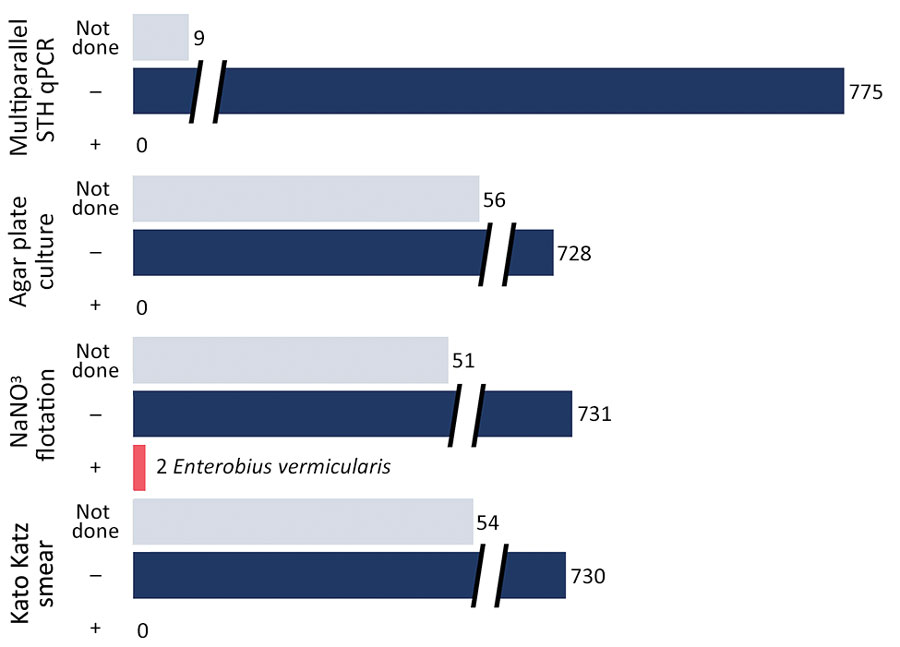Volume 29, Number 12—December 2023
Dispatch
Surveillance for Soil-Transmitted Helminths in High-Risk County, Mississippi, USA
Figure

Figure. Results of microscopic analyses using Kato–Katz smear, saturated NaNO3 flotation, and agar plate culture for Strongyloides and hookworm larvae, in addition to multiparallel qPCR results, for 784 stool specimens from 277 school-age children representing 129 households in a surveillance study for STH infection, Rankin County, Mississippi, USA, February 2020–September 2021. Multiparallel qPCR targeted Necator americanus, Ancylostoma duodenale, Trichuris trichiura, Strongyloides stercoralis, and Ascaris lumbricoides. Enterobius vermicularis eggs only were recovered in the 2 positive NaNO3 flotation results. PCR could not be performed for 9 specimens from 9 children, but all were negative by Kato–Katz smear and saturated NaNO3 flotation, agar plate culture for Strongyloides, and hookworm larvae. Of those, 8/9 were from children who submitted 3 specimens total each and whose other specimens tested negative by PCR and 1 child submitted only 1 specimen. NaNO3, sodium nitrate; ND, not done; qPCR, quantitative PCR; STH, soil-transmitted helminth; –, negative; +, positive.